
??
Handheld Computer
OPERATING INSTRUCTIONS
Please read this instructions manual carefully before using this product and save this manual for future use.

??
Handheld Computer
OPERATING INSTRUCTIONS
Please read this instructions manual carefully before using this product and save this manual for future use.
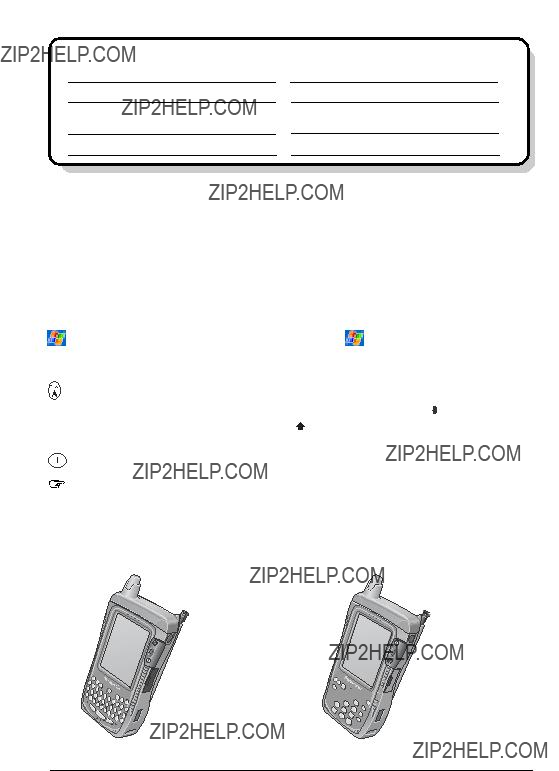
Customer's Record
Model No.*
Serial No. or
Code No.
Date of Purchase
Dealer's Name
Dealer's Address
*For the Model No., insert the 12 digit number (for example,
Introduction
Thank you for purchasing the Panasonic Handheld Computer. Read the operating instruc- tions thoroughly for proper operation of your new computer.
Illustrations and Terminology in this Manual
 Some of the illustrations in this manual may differ slightly in shape from the actual items in order to make the explanation easier to understand.
Some of the illustrations in this manual may differ slightly in shape from the actual items in order to make the explanation easier to understand.
This operating instructions describes the models below.
Note however that the illustrations mainly show the












(numeric keypad type keyboard)
2

Read Me First
For U.S.A.
Federal Communications Commission Radio Frequency Interference Statement
Note: This equipment has been tested and found to comply with the limits for a Class B digital device, pursuant to Part 15 of the FCC Rules. These limits are designed to provide reasonable protection against harmful interference in a residential installation. This equipment generates, uses and can radiate radio frequency energy and, if not installed and used in accordance with the instructions, may cause harmful interference to radio communications. However, there is no guarantee that interference will not occur in a particular installation. If this equipment does cause harmful interference to radio or television reception, which can be determined by turning the equipment off and on, the user is encouraged to try to correct the interference by one or more of the following measures:
 Reorient or relocate the receiving antenna.
Reorient or relocate the receiving antenna.
 Increase the separation between the equipment and receiver.
Increase the separation between the equipment and receiver.
 Connect the equipment into an outlet on a circuit different from that to which the receiver is connected.
Connect the equipment into an outlet on a circuit different from that to which the receiver is connected.
 Consult the Panasonic Service Center or an experienced radio/TV technician for help.
Consult the Panasonic Service Center or an experienced radio/TV technician for help.
Warning
To assure continued compliance, use only shielded interface cables when connecting to a computer or peripheral. Also, any changes or modifications not expressly approved by the party responsible for compliance could void the user???s authority to operate this equipment.
This device complies with Part 15 of the FCC Rules. Operation is subject to the following two conditions:
(1)This device may not cause harmful interference, and
(2)This device must accept any interference received, including interference that may cause undesired operation.
Responsible Party: Matsushita Electric Corporation of America
One Panasonic Way
Secaucus, NJ 07094
Tel No:
Notice for the products using LCD
This product uses one or more fluorescent lamps containing a small amount of mercury. It also contains lead in some components. Disposal of these materials may be regulated in your community due to environmental considerations. For disposal or recycling information please contact your local authorities, or the Electronics Industries Alliance: <http://www.eiae.org/>
3

Read Me First
For U.K.
Warning
This apparatus must be earthed for your safety.
To ensure safe operation the
Extension cords used with the equipment must be
The fact that the equipment operates satisfactorily does not imply that the power point is earthed and that the installation is completely safe.
For your safety, if you have any doubt about the effective earthing of the power point, consult a qualified electrician.
FOR YOUR SAFETY PLEASE READ THE FOLLOWING TEXT CAREFULLY
This appliance is supplied with a moulded three pin mains plug for your safety and convenience. A 3 amp fuse is fitted in this plug.
Should the fuse need to be replaced please ensure that the replacement fuse has a rating of 3 amps and that it is approved by ASTA or BSI to BS 1362.
Check for the ASTA mark A S A or the BSI mark  on the body of the fuse.
on the body of the fuse.
If the plug contains a removable fuse cover you must ensure that it is refitted when the fuse is replaced.
If you lose the fuse cover the plug must not be used until a replacement cover is obtained. A replacement fuse cover can be purchased from your local Panasonic Dealer.
IF THE FITTED MOULDED PLUG IS UNSUITABLE FOR THE SOCKET OUTLET IN YOUR
HOME THEN THE FUSE SHOULD BE REMOVED AND THE PLUG CUT OFF AND DIS-
POSED OF SAFELY.
THERE IS A DANGER OF SEVERE ELECTRICAL SHOCK IF THE CUT OFF PLUG IS IN-
SERTED INTO ANY 13 AMP SOCKET.
If a new plug is to be fitted please observe the wiring code as shown below. If in any doubt please consult a qualified electrician.
Warning: THIS APPLIANCE MUST BE EARTHED.
Important
The wires in this mains lead are coloured in accordance with the following code:
As the colours of the wires in the mains lead of this apparatus may not correspond with the coloured markings identifying the terminals in your plug, proceed as follows:
The wire which is coloured  coloured GREEN or
coloured GREEN or
YELLOW.
The wire which is coloured Blue must be connected to the terminal which is marked with the letter N or coloured BLACK.
The wire which is coloured Brown must be connected to the terminal which is marked with the letter L or coloured RED.
The mains plug on this equipment must be used to disconnect the mains power.
Please ensure that a socket outlet is available near the equipment and shall be easily accessible.
4
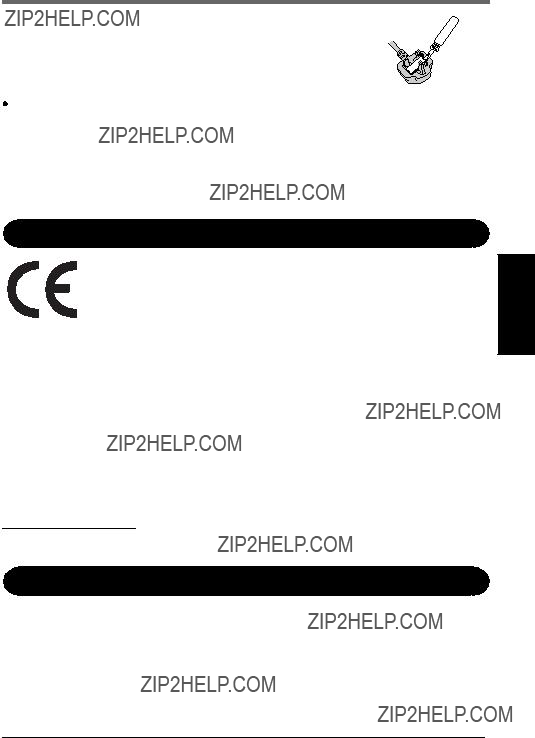

 How to replace the fuse
How to replace the fuse
Open the fuse compartment with a screwdriver and replace the fuse.
Warnings
This equipment is not designed for connection to an IT power system.
(An IT system is a system having no direct connections between live parts and Earth; the exposed-
An IT system is not permitted where the computer is directly connected to public supply systems in the U.K.)
 Disconnect the mains plug from the supply socket when the computer is not in use. This equipment is produced to BS800/1983.
Disconnect the mains plug from the supply socket when the computer is not in use. This equipment is produced to BS800/1983.
For Europe
Declaration of Conformity (DoC)
???Hereby, we and Panasonic Service Europe GmbH (PSE), declares that this Personal Computer is in compliance with the essential requirements and other relevant provisions of EU Council Directives.???
Hint:
If you want to get a copy of the original DoC of our products, please contact to our web address:
Compliance Notice - CE Mark
This equipment is in conformance with the requirements of the European Council Directive listed below:
73/23/EEC Low Voltage Directive with amendment 93/68/EEC 89/336/EEC EMC Directive with amendments 92/31/EEC and 93/68/EEC
Interface Cable
Use of an interface cable longer than 3 m (9.84 feet) is not recommended.
Lithium Battery
Lithium Battery!
This computer contains a lithium battery to enable the date, time, and other data to be stored. The battery should only be exchanged by authorized service personnel.
Warning! A risk of explosion from incorrect installation or misapplication may possibly occur.
5
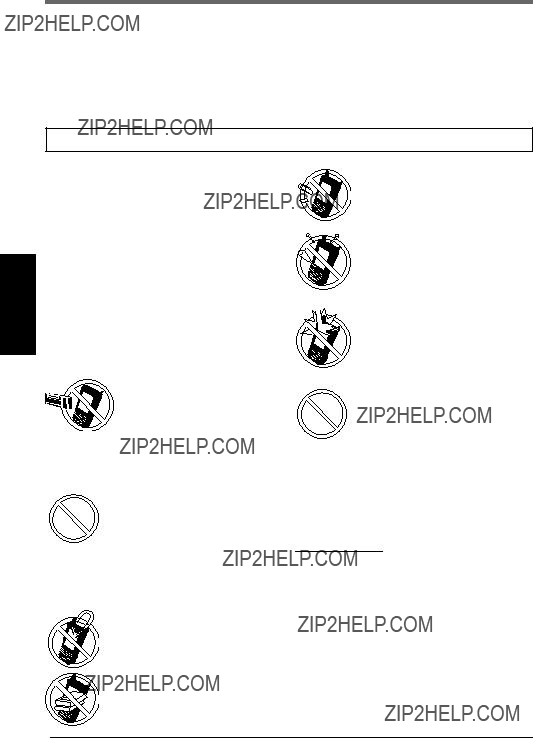
Precautions
The
The
As with any portable computer device precautions should be taken to avoid to the
Before putting the computer away, be sure to wipe off any moisture.
AvoidExtremeHeatandCold
Do not store or use the computer in locations exposed to heat (in an automobile on a sunny day, for example), direct sunlight, or extreme cold.
Avoid moving the computer between locations with large temperature differences. Operation
Temperature:
 Avoid Radio Frequency Inter-
Avoid Radio Frequency Inter-
ference
Do not place the computer near a television or radio receiver.
Be careful of
Avoid more than casual contact with any heat producing area of
the computer, AC adaptor, and
any option or accessory you use with it. Even low heat, if warmer than the body???s temperature, can cause burns, if the skin is exposed to the heat source for a long enough period of time.
AvoidMagneticFields
Keep the computer away from magnets.
Avoid Stacking
Do not place heavy objects on the computer.
Keep Small Objects Away
Do not insert paper clips or other small objects into the computer.
Do Not Disassemble the com- puter
Do not attempt to disassemble your computer.
Avoid Excessive Force on the
LCD
Do not apply excessive down- ward force on the LCD.
Keep SD memory cards and MultiMedia Cards (both sold separately) away from infants and small children.
Accidental swallowing will re- sult in bodily injury.
In the event of accidental swal- lowing, see a doctor immedi- ately.
Handling
 Do not drop or hit your computer against solid objects.
Do not drop or hit your computer against solid objects.
 Remove all cables before transporting your computer.
Remove all cables before transporting your computer.
 We recommend that the battery be fully charged. We also recommend that the backup battery (a
We recommend that the battery be fully charged. We also recommend that the backup battery (a
When transporting spare batteries inside a package, briefcase, etc., we recommend that the batteries be stored in a plastic bag.
6

Handling (continued)
 Always carry your computer with you when traveling. Never check it in with luggage. For use of the computer inside an aircraft, we recommend asking the airlines regarding their policy on this issue.
Always carry your computer with you when traveling. Never check it in with luggage. For use of the computer inside an aircraft, we recommend asking the airlines regarding their policy on this issue.
 It is a good idea to make backup copies on SD memory cards/MultiMedia Cards and carry them with you.
It is a good idea to make backup copies on SD memory cards/MultiMedia Cards and carry them with you.
Battery Pack
 Care should be exercised with regard to the following in order to avoid the possibility of
Care should be exercised with regard to the following in order to avoid the possibility of
Avoid Heat
Do not throw the battery pack into a fire or expose it to exces- sive heat.
KeepArticlesAway
Do not place the battery pack to- gether with articles such as neck- laces or hairpins when carrying or storing.
Do Not Disassemble
Do not insert sharp objects into the battery pack, expose it to bumps or shocks, or deform, dis- assemble, or modify it.
Do Not Short
Do not short the positive (+) and negative
Avoid Extreme Heat, Cold and
Direct Sunlight
Do not charge, use or leave the battery pack for extended peri- ods where it will be exposed to direct sunlight, in a hot place (in an automobile on a sunny day, for example), or in a cold place.
DoNotPutIntoaMicrowave
Do not put the battery pack into a microwave oven or a pressur- ized chamber.
Do Not Use With Any Other
Device
The battery pack is rechargeable and was intended for the speci- fied computer. Do not use it with a device other than the one for which it was designed.
Stop Using
Should the battery emit an ab- normal odor, become hot to the touch, become discolored, change shape, or become in any way different from normal, re- move it from the computer and stop using it.
 If the battery pack will not be used for a long period of time (a month or more), charge or discharge (use) the battery pack until the remaining battery level becomes 30 % to 40 % and store it in a cool, dry place.
If the battery pack will not be used for a long period of time (a month or more), charge or discharge (use) the battery pack until the remaining battery level becomes 30 % to 40 % and store it in a cool, dry place.
 The battery pack is not charged when the computer is first purchased. Be sure to charge it before using it for the first time. When the AC adaptor is connected to the computer, charging begins automatically.
The battery pack is not charged when the computer is first purchased. Be sure to charge it before using it for the first time. When the AC adaptor is connected to the computer, charging begins automatically.  If the battery leaks and the fluid get into your eyes, do not rub your eyes. Immedi- ately flush your eyes with clear water and see a doctor for medical treatment as soon as possible.
If the battery leaks and the fluid get into your eyes, do not rub your eyes. Immedi- ately flush your eyes with clear water and see a doctor for medical treatment as soon as possible.
7
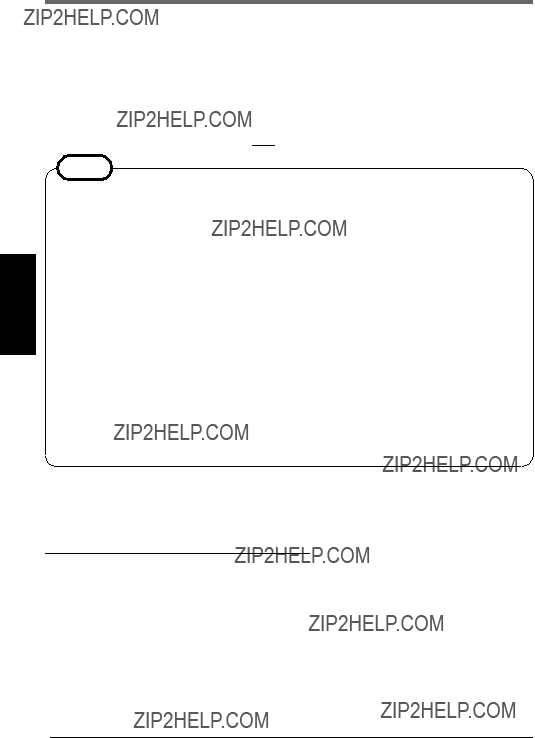
Precautions
About High Temperature Mode
This computer has a high temperature mode function that prevents the degradation of the battery in high temperature environments. We recommend setting the high temperature mode function when installing the computer in a car, etc. To do this, set [Charging mode:]
in  - [Settings] - [System] tab - [Panasonic Settings] - [Charging Mode] tab*1 to [High
- [Settings] - [System] tab - [Panasonic Settings] - [Charging Mode] tab*1 to [High
Temperature]. In the high temperature mode, the full charge capacity of battery becomes approximately 70 %.
*1 To display the hidden tab, tap the 

 on the right edge of the tab.
on the right edge of the tab.
NOTE
 The battery pack may become warm during recharging or normal use. This is completely normal.
The battery pack may become warm during recharging or normal use. This is completely normal.
 Recharging will not commence outside of the allowable temperature range (5 ??C to 40 ??C {41??F to 104??F})*2. Even if charging stops because the temperature is outside the charging temperature range, the battery indicator will remain in the illuminated orange. Once the allowable range requirement is satisfied, charging begins automatically. Note that the recharging time varies based on the usage conditions. (Recharging takes longer than usual when the temperature is 10 ??C {50 ??F} or below.)
Recharging will not commence outside of the allowable temperature range (5 ??C to 40 ??C {41??F to 104??F})*2. Even if charging stops because the temperature is outside the charging temperature range, the battery indicator will remain in the illuminated orange. Once the allowable range requirement is satisfied, charging begins automatically. Note that the recharging time varies based on the usage conditions. (Recharging takes longer than usual when the temperature is 10 ??C {50 ??F} or below.)
 If the temperature is low, the operating time is shortened. Only use the computer within the allowable temperature range.
If the temperature is low, the operating time is shortened. Only use the computer within the allowable temperature range.
 The battery pack is a consumable item. If the amount of time the computer can be run off a particular battery pack becomes dramatically shorter and repeated recharging does not restore its performance, the battery pack should be replaced with a new one.
The battery pack is a consumable item. If the amount of time the computer can be run off a particular battery pack becomes dramatically shorter and repeated recharging does not restore its performance, the battery pack should be replaced with a new one.
 When a spare battery pack is to be carried in a pocket or bag, it is recommended that it be placed in a plastic bag so that its contacts are protected.
When a spare battery pack is to be carried in a pocket or bag, it is recommended that it be placed in a plastic bag so that its contacts are protected.
 Always power off the computer when it is not in use. Leaving the computer on when the AC adaptor is not connected will exhaust the remaining battery capacity.
Always power off the computer when it is not in use. Leaving the computer on when the AC adaptor is not connected will exhaust the remaining battery capacity.
*2These temperature settings are valid when the battery is charging and the computer is off. The temperature range may become narrower when the battery is charging and the com- puter is operating.
When Using Peripheral Devices
Pay strict attention to the following points to avoid damage to the computer, peripheral de- vices, cables, etc. Also, in addition to following this manual, carefully read the instruction manuals for the peripheral devices being used.
 Use only peripheral devices that conform to the computer???s specifications.
Use only peripheral devices that conform to the computer???s specifications.
 Connect the devices properly, paying close attention to the condition and position of the connectors.
Connect the devices properly, paying close attention to the condition and position of the connectors.
 If a connection cannot be made easily, do not apply undue force; check once more to confirm the condition and position of the connector (alignment of pins, etc.).
If a connection cannot be made easily, do not apply undue force; check once more to confirm the condition and position of the connector (alignment of pins, etc.).
 If the connector has holding screws, fasten the screws firmly.
If the connector has holding screws, fasten the screws firmly.
 Do not carry the computer with cables attached, and do not pull on the cables forcefully.
Do not carry the computer with cables attached, and do not pull on the cables forcefully.
8

What???s in the Box?
Make sure the parts shown in the figure have been supplied. If any of these items is missing or is not working properly, contact Panasonic Technical Support.
Make sure the provided stylus has been stored to the computer ( page 20).
page 20).
*1You can use the Companion CD to install various software, including Microsoft?? Outlook?? 2002 and Microsoft?? ActiveSync?? ( page 36).
page 36).
Attaching the Strap
CAUTION
 The strap has been designed to carry only the weight of the computer. Therefore, be sure that the strap does not carry a weight that exceeds the weight of the computer. The strap may accidentally come loose from the computer.
The strap has been designed to carry only the weight of the computer. Therefore, be sure that the strap does not carry a weight that exceeds the weight of the computer. The strap may accidentally come loose from the computer.
 Do not use a strap that is damaged or about to tear.
Do not use a strap that is damaged or about to tear.
9
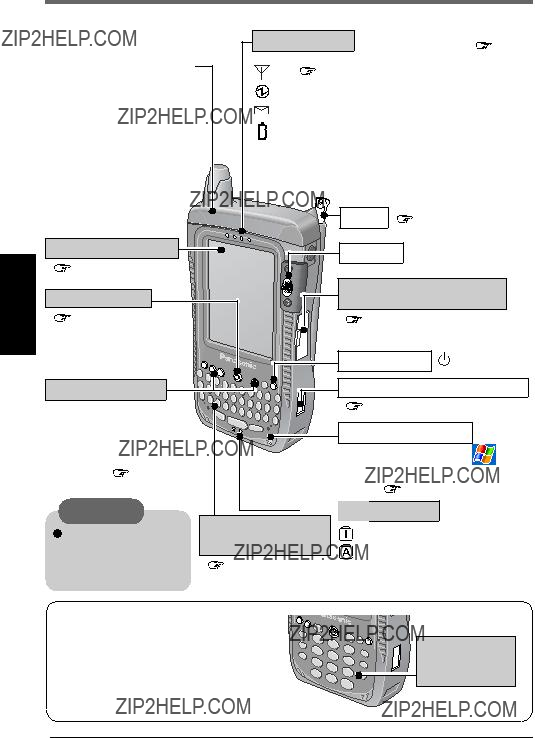
Names and Functions of Parts
The illustrations shown may differ from the actual physical appearances.
ket.
< For the
The keyboard is of the numeric keypad type. There are no LED indicators
(  Numeric key lock and
Numeric key lock and  Caps Lock).
Caps Lock).
Keyboard (numeric key- pad type)
(  page 26 )
page 26 )
10
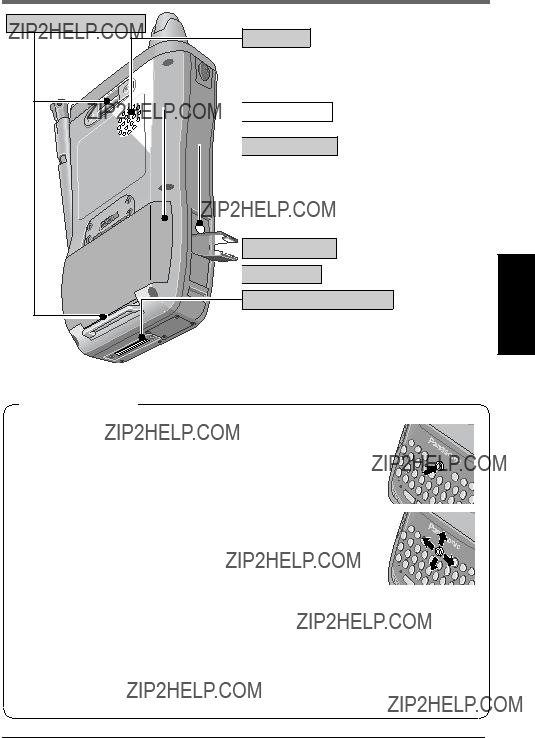
Strap Attachments
( page 9)
page 9)
Cursor Control
Speaker
To adjust the volume, tap  - [Settings] - [Per- sonal] tab - [Sounds & Notifications] - [Volume] tab.
- [Settings] - [Per- sonal] tab - [Sounds & Notifications] - [Volume] tab.

 Battery Pack (
Battery Pack ( pages 13 and 30)
pages 13 and 30)

 Headset Jack
Headset Jack
Use this connector to connect a headset or a 3.5 DIA plug adaptor ( page 12). Audio output and voice call from the internal speaker are dis- abled when the headset or the 3.5 DIA plug adap- tor is connected.
page 12). Audio output and voice call from the internal speaker are dis- abled when the headset or the 3.5 DIA plug adap- tor is connected.
 Reset Switch (
Reset Switch ( page 43)
page 43)



Expansion Connector
Set the computer into the cradle (included)
( next page). Or, you can connect the com- puter directly to the computer using the proper cable (
next page). Or, you can connect the com- puter directly to the computer using the proper cable ( page 38).
page 38).
Using the cursor control, the following operations can be performed.
???Push??? Operation:
Executes a selected item from a menu, or a selected icon. For example, after an item within a menu is selected, the cursor control can be pushed to execute this selected item.
???MoveUp/DownRight/Left???Operations:
Performs the same function as the up/down left/right cur- sor keys. For example, the ???Move Up??? operation can be
performed to select an item towards the top within a menu.
Changing the Cursor Control Settings
The cursor control settings allow you to adjust the interval between the waiting time until the repetition of an input begins (from the first input to the second input) if the cursor control is held down, and the repeat of the input (from the second input and on).
1 Tap  - [Settings] - [Personal] tab - [Buttons] - [Up/Down Control] tab.
- [Settings] - [Personal] tab - [Buttons] - [Up/Down Control] tab.
2 Customize the way your cursor control repeats.
3 Tap [ok].
11

Names and Functions of Parts
Headset and 3.5 DIA plug adaptor
Only the
 *1Answer switch
*1Answer switch 
 Microphone
Microphone
3.5 DIA plug
*1 Press for about one second to answer/ hang up voice calls. Function will not operate if the switch is not pressed long enough.
Connecting/Removing the Cradle
Connecting the Cradle
Connect the cradle after removing the AC adaptor from the computer and closing the

 The AC adaptor is con- nected to the position shown by the arrow in the figure.
The AC adaptor is con- nected to the position shown by the arrow in the figure.
 Only the provided adap- tor can be used.
Only the provided adap- tor can be used.
Removing the Cradle
1 Press the release lever.
E
S
A
LE
E
R
 1A P B E
1A P B E
12
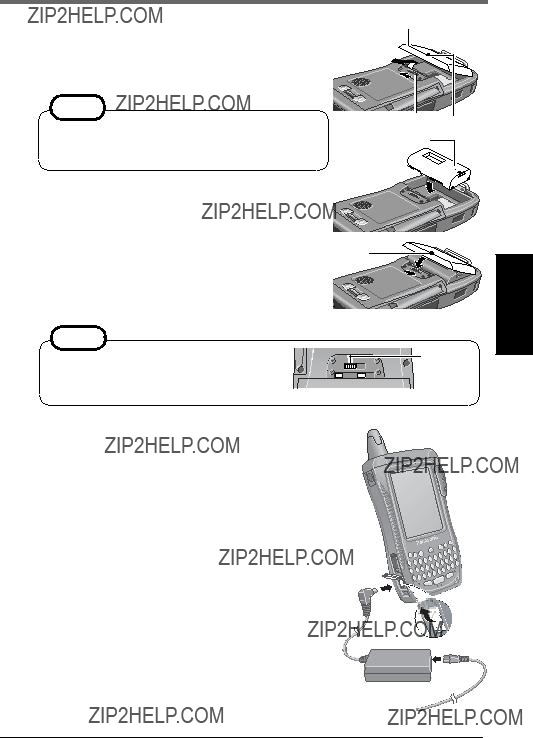
(3) Set the arrow mark of the battery in the direction shown in the figure, and then insert the battery pack into the battery pack compartment.
cover and then slide the latch to lock the cover.
NOTE
the latch all the way to the left so that
2 Connect your computer to a power outlet.
When the AC adaptor is connected to the computer, charg- ing begins automatically.
Charging Time: Approx. 3 hours
This computer is equipped with a memory backup battery which automatically charges from the
13

NOTE
 When the backup battery or main battery becomes low, some alert messages and icons will be displayed. (
When the backup battery or main battery becomes low, some alert messages and icons will be displayed. ( page 17)
page 17)
CAUTION
 Do not remove the main battery before the backup battery is fully charged. Other- wise, data in RAM will be lost.
Do not remove the main battery before the backup battery is fully charged. Other- wise, data in RAM will be lost.
 Take care to ensure that the remaining power in the main battery and the backup battery never discharges completely.
Take care to ensure that the remaining power in the main battery and the backup battery never discharges completely.
When any remaining power discharges completely, the computer will no longer function properly, and the computer powers off automatically. Connect the AC adap- tor and recharge the battery. If the computer is left for 72 hours or more without recharging, the computer may be fully reset. When the computer is fully reset, all
 After the cover is closed, press down firmly on the cover and confirm that the cover is locked.
After the cover is closed, press down firmly on the cover and confirm that the cover is locked.
HandlingtheACadaptor
 Do not twist or pull the AC power cord forcefully. Doing so may damage the connections.
Do not twist or pull the AC power cord forcefully. Doing so may damage the connections.
 Use only the provided AC adaptor with your computer. Using an AC adaptor other than the one provided might damage the battery and/or the computer.
Use only the provided AC adaptor with your computer. Using an AC adaptor other than the one provided might damage the battery and/or the computer.
 When the DC plug is not connected to the computer, disconnect the AC cord from your AC wall outlet.
When the DC plug is not connected to the computer, disconnect the AC cord from your AC wall outlet.
 Problems such as sudden voltage drops may arise during periods of thunder and lightning storms. Since this could adversely affect your computer, an uninterruptible power source (UPS) is highly recommended unless the battery pack is installed.
Problems such as sudden voltage drops may arise during periods of thunder and lightning storms. Since this could adversely affect your computer, an uninterruptible power source (UPS) is highly recommended unless the battery pack is installed.
14
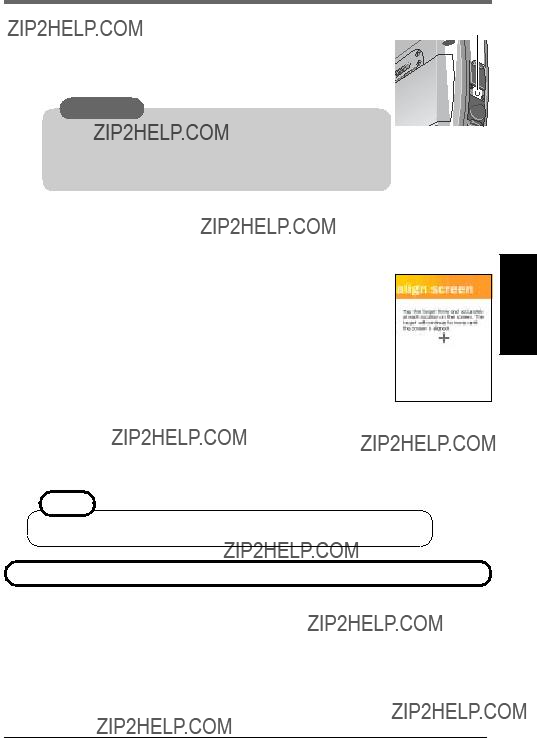
CAUTION
Use only the stylus provided to push the reset switch.
Do not push the reset switch with any other
(2)Tap the screen to set up your Pocket PC.
The Windows*1 alignment screen is displayed.
*1 This computer uses Microsoft?? Windows?? MobileTM 2003 software for Pocket PC.
(3)Align the touchscreen.
(For alignment, tapping operations are required. For information on tapping, refer to page 20.)
"+" is displayed in the center, upper left, lower left, lower right, and upper right portions of the screen, in that order. Each time the "+" mark is displayed, tap the center of the "+" mark with the stylus.
(4)At [complete], tap the screen to begin using
4 Set the time and date
(1)Tap  - [Settings] - [System] tab - [Clock].
- [Settings] - [System] tab - [Clock].
(2)Set the time and date.
(3)Tap [ok].
NOTE
You can also set the time and date by tapping  on [Today] screen.
on [Today] screen.
This concludes the
15

Starting Up/Shutting Down
Starting Up (from the second time)
Lightly press the power switch once.
A program or file that was previously displayed appears on your screen.
Power Switch
OFFON
Power Switch 
 Lightly press the power switch (for less than 0.5 seconds).
Lightly press the power switch (for less than 0.5 seconds).
 To turn the backlights on/off:
To turn the backlights on/off:
Press the power switch until the LCD backlight and keyboard backlight go on/off and release the switch.
At the time of purchase, the setting of the keyboard backlight is ???off???. To turn the keyboard backlight on, refer to page 22.
NOTE
 When the backlight is on, more power is consumed, and the shortening of the operating time is accelerated.
When the backlight is on, more power is consumed, and the shortening of the operating time is accelerated.
16
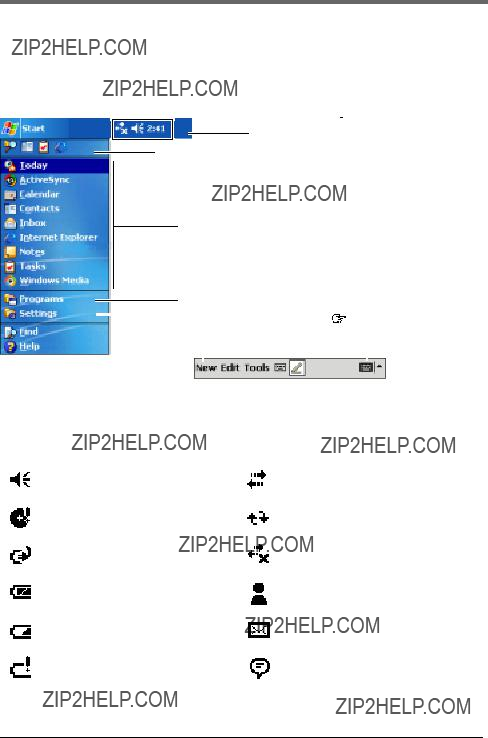
The Navigation Bar and Command Bar
The navigation bar is located at the top of the screen. It displays the active program and current time, and allows you to switch to programs and close screens.
Use the command bar at the bottom of the screen to perform tasks in programs. The command bar includes menu names, buttons, and the input panel button.
 Status Icon (
Status Icon ( below)
below)
 or
or  may be displayed depending on the program that is running.
may be displayed depending on the program that is running.
 Tap to quickly select a program you have recently used.
Tap to quickly select a program you have recently used.
Tap to select a program.
Tap to see additional programs.
17

Starting Up/Shutting Down
Today Screen
You???ll see the Today screen when you turn on the computer for the first time each day (or after 4 hours of inactivity*1). You can also display it by tapping  - [Today]. On the Today screen, you can see at a glance important information for the day.
- [Today]. On the Today screen, you can see at a glance important information for the day.
*1 To change the setting, tap  - [Settings] - [Personal] tab - [Today] - [Items] tab.
- [Settings] - [Personal] tab - [Today] - [Items] tab.
Tap to switch to a program.
Tap to change date and time.
Tap to open an item.
Your day at a glance.
 Tap to create a new item.
Tap to create a new item.
Displayed when synchronizing with a host computer using Microsoft?? ActiveSync??. Tap to view connection status.
18

With
Tap and hold to display the
Lift the stylus and tap the action you want.
Tap outside the menu to close it without performing an action.
Shutting Down (power off)
CAUTION
Check that the SD memory card/MultiMedia Card is not being accessed before turning off the power. If the power is turned off while the card is being accessed, the data stored on the card may be damaged and the computer may stop working properly.
19

LCD (Touchscreen)
Using the Stylus
Use the stylus provided to perform operations on the touchscreen. The stylus is located in the stylus holder at the upper right of the computer, and can be held like a pen or pencil. The following operations are possible on the touchscreen.
Tapping
You can select an item on the screen by tapping it with the stylus.
This operation is called a ???tap???.
Dragging
You can drag on item on the screen by holding the stylus down over the item and then moving the stylus. This operation is called a ???drag???.
Tapping and Holding
You can tap and hold the stylus on an item to see a list of actions available for that item. On the
Handling the Stylus

 Clean the stylus tip and screen prior to operation. Foreign particles can scratch the screen and impede the operation of the stylus.
Clean the stylus tip and screen prior to operation. Foreign particles can scratch the screen and impede the operation of the stylus.
 Use the provided stylus only on the screen. Using it for any other purpose may damage the stylus and scratch the screen.
Use the provided stylus only on the screen. Using it for any other purpose may damage the stylus and scratch the screen.
20
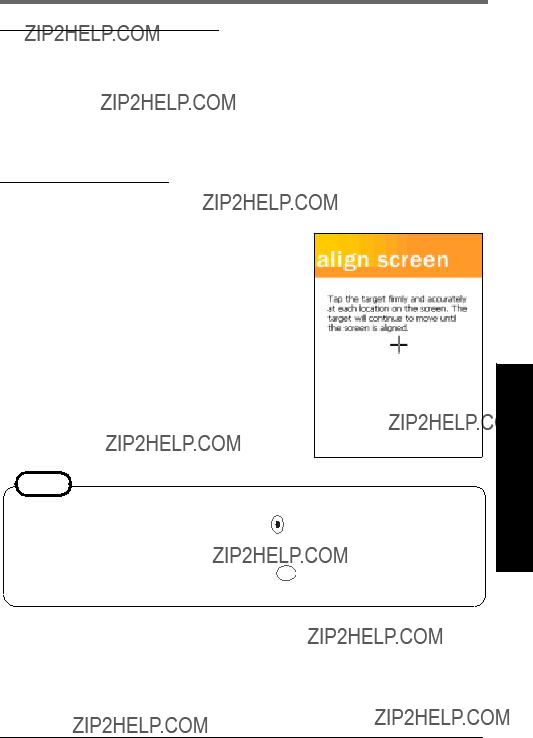
Handling the Touchscreen
 Use the provided stylus with
Use the provided stylus with
 Do not place any object on the surface or press down forcefully with
Do not place any object on the surface or press down forcefully with
 Do not operate the computer when such things as dust are on the LCD. Do not allow substances such as oil to contact the LCD. The cursor may not work properly in such cases.
Do not operate the computer when such things as dust are on the LCD. Do not allow substances such as oil to contact the LCD. The cursor may not work properly in such cases.
Aligning the Screen
Align the screen if the cursor does not correctly move to the position where the stylus touches the screen of the computer.
1
2
Tap  - [Settings] - [System] tab - [Screen].
- [Settings] - [System] tab - [Screen].
Tap [Align Screen].
3 "+" is displayed in the center, upper left, lower left, lower right, and upper right portions of the screen, in that order.
Each time the "+" mark is displayed, tap the center of the "+" mark with the stylus.
The alignment procedure is executed after the five ???+??? marks are touched.
NOTE
<For the
You can also display the alignment screen when (Mode key) + the cursor control are pushed.
<For the
You can also display the alignment screen when PF (PF key) + the cursor control are pushed.
21

Backlight Setting
Adjust the LCD Brightness
Screen brightness can be adjusted in accordance with the usage conditions.
1
2
3
Tap  - [Settings] - [System] tab - [Backlight].
- [Settings] - [System] tab - [Backlight].
Tap the [Brightness] tab and adjust the brightness with the slider.
Tap [ok].
LCD Backlight ON/OFF
Press the power switch until the LCD backlight goes on/off after the computer is turned on and release the switch.
Setting of the LCD Backlight and Keyboard Backlight
The LCD backlight and keyboard backlight can be set to switch off automatically (e.g., for conserve power) by setting the timeout function. Individual settings can be made for battery use and AC adaptor use.
1 Tap  - [Settings] - [System] tab - [Backlight].
- [Settings] - [System] tab - [Backlight].
(Example for [Battery Power])
3 Tap [ok].
Add a check mark so that when the device is not oper- ated, the LCD backlight switches off automatically when the timeout expires.
Timeout
Add a check mark so that tapping the screen turns the LCD backlight on.
Add a check mark to turn the keyboard backlight on when the LCD backlight turns on.
22

Entering Information
You can use the following options to enter information:
 Use the keyboard to input the number, character*1 or symbol*1 shown on the key top.
Use the keyboard to input the number, character*1 or symbol*1 shown on the key top.
 Use the input panel to input typed text, either by using the soft keyboard or other input method.
Use the input panel to input typed text, either by using the soft keyboard or other input method.
 Write directly on the screen.*2
Write directly on the screen.*2
 Draw pictures on the screen.*2
Draw pictures on the screen.*2
 Speak into the internal microphone to record a message.*2
Speak into the internal microphone to record a message.*2
 Use Microsoft?? ActiveSync?? to synchronize or copy information from a host computer to
Use Microsoft?? ActiveSync?? to synchronize or copy information from a host computer to  page 36).
page 36).
Using the Input Panel
Use the input panel to enter information in any program on
To show or hide the input panel, tap the input panel button. Tap the arrow next to the input panel button to see your choices.
Select an input method
Input Panel Button
Tap to see your choice
Tap [123] to allow the keyboard to input $, {}, %, etc.
To type with the soft keyboard:
(1)Tap the arrow next to the input panel button and then [Keyboard].
(2)On the soft keyboard that is displayed, tap the keys with your stylus.
NOTE
If the keyboard is used while the soft keyboard is open, the soft keyboard will close.
23

Entering Information
Using the QWERTY Keypad Type Keyboard <For the
OK Key
Alphabet Keys
ESC Key
Mode Key
NUM Key
Key
Mode Key
 A symbol or number on the key top is input by pressing the Mode key (the numeric key lock indicator goes on) followed by the corresponding alphabet key. Each Mode key press works for the input of only one symbol or number. This is convenient when using one hand to input sentences including symbols/numbers.
A symbol or number on the key top is input by pressing the Mode key (the numeric key lock indicator goes on) followed by the corresponding alphabet key. Each Mode key press works for the input of only one symbol or number. This is convenient when using one hand to input sentences including symbols/numbers.
Example: To input ???abc.def.???, press the keys in the following order.
 To input only symbols or numbers on the key top, keep holding down this key while input- ting symbols or numbers.
To input only symbols or numbers on the key top, keep holding down this key while input- ting symbols or numbers.
 This key is also for inputting accented letters, using [ESC]key and [DEL]key. For more details, see the explanation of each keys.
This key is also for inputting accented letters, using [ESC]key and [DEL]key. For more details, see the explanation of each keys.
NUM Key
Key
 Each time the Mode key + NUM
Each time the Mode key + NUM key are pressed, the mode changes from the alphabet input mode (default) to the symbol/number input mode, and vice versa. In the symbol/ number input mode (numeric key lock indicator on), the symbols and numbers on the key top can be inputted continuously.
key are pressed, the mode changes from the alphabet input mode (default) to the symbol/number input mode, and vice versa. In the symbol/ number input mode (numeric key lock indicator on), the symbols and numbers on the key top can be inputted continuously.
To exit the symbol/number input mode, you can also choose to press only the NUM key.
key.  Pressing this key once and pressing an alphabet key can be input the capital letter.
Pressing this key once and pressing an alphabet key can be input the capital letter.
????/SPACE Key
 Pressing this key inserts a space.
Pressing this key inserts a space.
 Pressing the Mode key + ????/SPACE key input accented letters after inputting the corre- sponding alphabet key.
Pressing the Mode key + ????/SPACE key input accented letters after inputting the corre- sponding alphabet key.
Example: To input ???????? or ????????, press the keys in the following order.
????????: A
Hold down the Mode key and press the ????/SPACE key repeatedly if necessary, until the desired character appears.
24

 CAP Key
CAP Key
This key is used for inputting capital letters.
 Each time the Mode key +
Each time the Mode key + CAP key are pressed, the mode changes from the standard
CAP key are pressed, the mode changes from the standard
(When both the numeric key lock indicator and caps lock indicator are on, priority is given to the symbol/number input mode.)
Inputting
Press an alphabet while also holding down on the NUM key.
key.
 Pressing this key once and pressing an alphabet key can be input the capital letter (like the NUM
Pressing this key once and pressing an alphabet key can be input the capital letter (like the NUM key).
key).
Enter Key
This key works the same as the Enter key of a computer, e.g., line feed in a document, and to select icons and items from menus, etc.
DEL (Delete) /Backspace Key
This key works the same as the Backspace key of a computer.
If pressed the Mode key + DEL/Backspace key, this key works the same as the Delete key of a computer.
TAB Key
This key works the same as the Tab key of a computer.
OK Key
This key works the same as the tapping [ok] on the screen.
ESC Key
If pressed with Mode key, this key works the same as the Esc key on a computer.
25

Entering Information
Using the Numeric Keypad Type Keyboard <For the
Press a key to input the number shown on the key top.
The keys can also be used as function keys. (See "PF key" below.)
OK Key
PF Key:When  is pressed and the PF key indicator is turned on (function key mode), the functions assigned to the each number key are activated when the corresponding keys are pressed.
is pressed and the PF key indicator is turned on (function key mode), the functions assigned to the each number key are activated when the corresponding keys are pressed.
(The functions assigned to the number keys differently depending on the application.)
- To use the function key mode only once:
tings, see the next page.
OK Key:This key works the same as the tapping [ok] on the screen.
26

Assigning of Programs <Only for the
Customize the keys to open your most used programs.
1 Tap  - [Settings] - [System] tab - [Panasonic Settings] - [Buttons] tab.
- [Settings] - [System] tab - [Panasonic Settings] - [Buttons] tab.
2 Choose each setting.
The following functions are assigned to the keys at the time of purchase:
PF+6 - Volume up, PF+7- Volume down
The assignment of those keys can be changed.
(1)Tap one item.
(2)Tap  under [Button assignment] and select a pro- gram from the list.
under [Button assignment] and select a pro- gram from the list.
When selecting [None], the button assignment in the list shown above will be none.
When selecting [(...Free command)], [Open] will be displayed (See below).
(3)Tap  and select a folder and type of files.
and select a folder and type of files.
(4)Tap folders and select a program from the list.
27

Program Buttons
The F1, F2, F3 and F4 buttons are called pro- gram buttons. If either of the program but- tons is pressed after the computer has started up, the program assigned for that button is started up.
Program Buttons
Changing the Assignment of a Program Button
Programs are assigned to the program buttons at the time of purchase.
F3 - Start Menu, F4 - Context Menu
You can change the assignment of the program buttons following the procedure.
1 Tap  - [Settings] - [Personal] tab - [Buttons].
- [Settings] - [Personal] tab - [Buttons].
2 Choose each setting.
(1)Tap one button.
(2)Tap  under [Button assignment] and select a pro- gram from the list.
under [Button assignment] and select a pro- gram from the list.
If the [Restore Defaults] is tapped, the assignments will return to the default settings.
3 Tap [ok].
Setting to Resume with a Program Button
You can resume the computer with one of the F1, F2, F3 and F4 buttons.
1 Tap  - [Settings] - [System] tab - [Panasonic Settings] - [Wakeup]*1 tab.
- [Settings] - [System] tab - [Panasonic Settings] - [Wakeup]*1 tab.
*1 To display the hidden tab, tap the 
 on the right edge of the tab.
on the right edge of the tab.
2
3
Add a check mark to resume when the program button is pressed. Tap [ok].
28
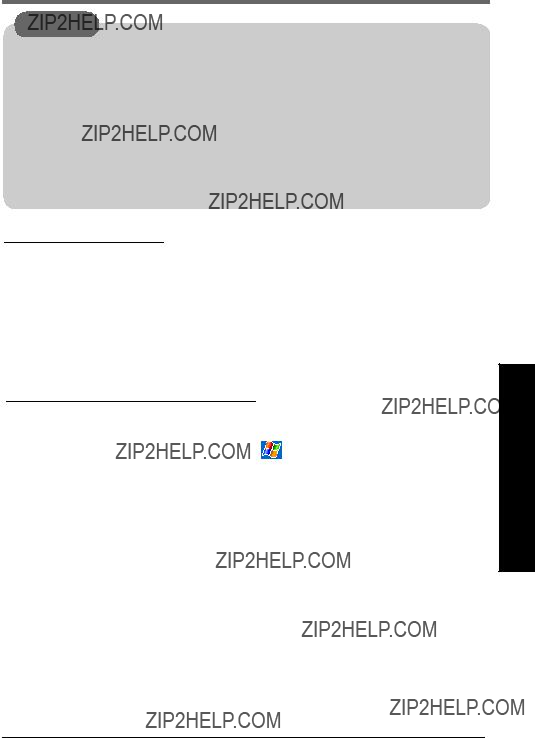
Battery Power
CAUTION
 Ensure that the backup battery is fully charged before replacing the battery pack and replace the battery pack within 5 hours; otherwise the data in RAM will be lost.
Ensure that the backup battery is fully charged before replacing the battery pack and replace the battery pack within 5 hours; otherwise the data in RAM will be lost.
 Do not touch the terminals of the battery pack. The battery pack may no longer function properly if the contacts are dirty or damaged.
Do not touch the terminals of the battery pack. The battery pack may no longer function properly if the contacts are dirty or damaged.
 Do not expose the battery pack to water, or allow it to become wet.
Do not expose the battery pack to water, or allow it to become wet.
 The battery pack is not charged when
The battery pack is not charged when
 Use only the specified battery pack
Use only the specified battery pack  Do not install or remove the battery pack while
Do not install or remove the battery pack while
Remaining Battery
Tap  - [Settings] - [System] tab - [Power].
- [Settings] - [System] tab - [Power].
The remaining battery charge is displayed.
When the Remaining Battery Charge Becomes Low
 Plug in the AC adaptor, and fully charge your battery.
Plug in the AC adaptor, and fully charge your battery.
 Use a spare battery if you have one.
Use a spare battery if you have one.
 If you have neither the AC adaptor nor a spare battery, power off your computer.
If you have neither the AC adaptor nor a spare battery, power off your computer.
About High Temperature Mode
This computer has a high temperature mode function that prevents the degradation of the battery in high temperature environments.
settings] - [Charging mode] tab, and set [Charging mode] to [High Temperature]. A level corresponding to a 100% charge for high temperature is approximately equivalent to an 70% charge level for normal temperature mode.
29
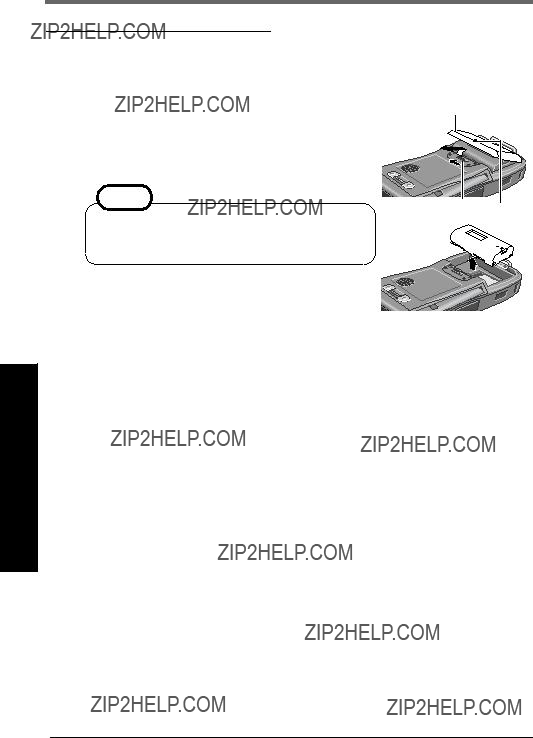
Battery Power
Replacing the Battery Pack
When the charge provided by your battery pack is supplied for only a short period of time, even after full charging according to the instructions, it may be time to replace your battery pack. The battery pack is a consumable item and therefore requires replacement
Remove the battery pack
(1)Turn off your computer and wait for 30 seconds.
(2)Turn your computer over.
(3)Press position (A) to depress the battery pack cover and
then slide the latch, and remove the battery pack cover.
NOTE
If the attached strap makes it difficult to remove the battery pack cover, unbuckle the strap and then re- move the cover.
(4) Remove the battery in the direction shown in the figure.
Install the battery pack
(1)Turn off your computer.
(2)Refer to page 13 about installing the battery pack.
(3)Turn your computer on.
(4)Save the unsaved data and push the reset switch.
Battery Pack Cover
30

SD Memory Card/MultiMedia Card
An SD memory card/MultiMedia Card can be used for the following purposes.
 The exchange of data with various devices equipped with an SD memory card/MultiMedia Card slot, audio storage, and so on.
The exchange of data with various devices equipped with an SD memory card/MultiMedia Card slot, audio storage, and so on.
NOTE
Software (e.g., drivers) required to exchange data with these devices. (Refer to the instructions manual provided with each SD compatible peripheral device.)
 Use as a memory card (e.g., use as a storage unit on which files can be written).
Use as a memory card (e.g., use as a storage unit on which files can be written).
Inserting/Removing an SD Memory Card/MultiMedia Card
1 Open the SD memory card/MultiMedia Card slot cover.
2 Inserting
Slide the card in until it snaps into place as shown in the illustration.
 Make sure the labeled face of the SD memory card/ MultiMedia Card is towards the front of the computer and then firmly insert the card. If you mistake the back side of the card with the top surface side, the card cannot be in- serted all the way into the slot.
Make sure the labeled face of the SD memory card/ MultiMedia Card is towards the front of the computer and then firmly insert the card. If you mistake the back side of the card with the top surface side, the card cannot be in- serted all the way into the slot.
 Do not insert the card at an angle.
Do not insert the card at an angle.  Insert the card all the way into the slot.
Insert the card all the way into the slot.
Removing
(1)Press the card. It will come out slightly.
(2)Remove the card.
3 Close the SD memory card/MultiMedia Card slot cover.
SD Memory Card/
MultiMedia Card Slot
CAUTION
Before removing an SD memory card/MultiMedia Card or powering off
31

Panasonic Backup
Using the backup function, you can back up data from the
CAUTION
 If a mail in [Inbox] is backed up using Panasonic Backup, it cannot be accessed after restoring. When using [Inbox], do not use Panasonic Backup. Use Microsoft?? ActiveSync?? to backup/restore.
If a mail in [Inbox] is backed up using Panasonic Backup, it cannot be accessed after restoring. When using [Inbox], do not use Panasonic Backup. Use Microsoft?? ActiveSync?? to backup/restore.
 Do not do the following during the procedure:
Do not do the following during the procedure:
 Disable the connection with the host computer, for example by disconnecting the cable.
Disable the connection with the host computer, for example by disconnecting the cable.  Confirm that battery remaining is at least 50%, disable all power management, and stop any other programs that may be running.
Confirm that battery remaining is at least 50%, disable all power management, and stop any other programs that may be running.
NOTE
 Backup processing cannot be executed manually during Auto Backup or Auto Restore.
Backup processing cannot be executed manually during Auto Backup or Auto Restore.
 We recommend that each media be formatted as shown below when backing up.
We recommend that each media be formatted as shown below when backing up.
Follow the
The progress screen will be displayed. To stop the op- eration, tap [Abort].
???Backup successful??? will be displayed when the backup is complete. Tap [ok].
32
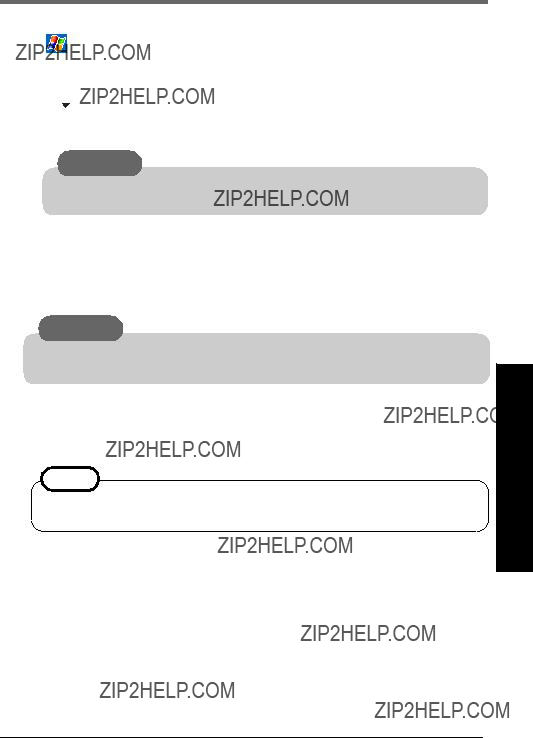
Auto Backup
CAUTION
 If there is a check mark in [Stop other application before backup], some appli- cations currently being executed may not be shut down properly.
If there is a check mark in [Stop other application before backup], some appli- cations currently being executed may not be shut down properly.
4 Make a setting for Auto Backup.
 When making a setting at the time and day*1:
When making a setting at the time and day*1:
(1)Tap [Schedule] tab.
(2)Add a check mark for [Scheduling backup].
(3)Set the time and day to back up at [Backup Schedule].
CAUTION
 When using 10 MB or more of storage memory, do not operate the computer for a few minutes after making settings.
When using 10 MB or more of storage memory, do not operate the computer for a few minutes after making settings.
 When making a setting to start Auto Backup when the remaining battery power is low*1:
When making a setting to start Auto Backup when the remaining battery power is low*1:
(1)Tap [Battery] tab.
(2)Add a check mark for [Backup when battery is low].
(3)Set the threshold.
NOTE
 If power is off, the amount of battery power remaining cannot be checked so that this function cannot work.
If power is off, the amount of battery power remaining cannot be checked so that this function cannot work.
*1[Scheduling backup] and [Battery] can be set simultaneously.
 When setting a password for backup files:
When setting a password for backup files:
(1)Tap [Password] tab.
(2)Add a check mark for [Set Password].
(3)Set password for backup files.
5 Tap [ok].
33
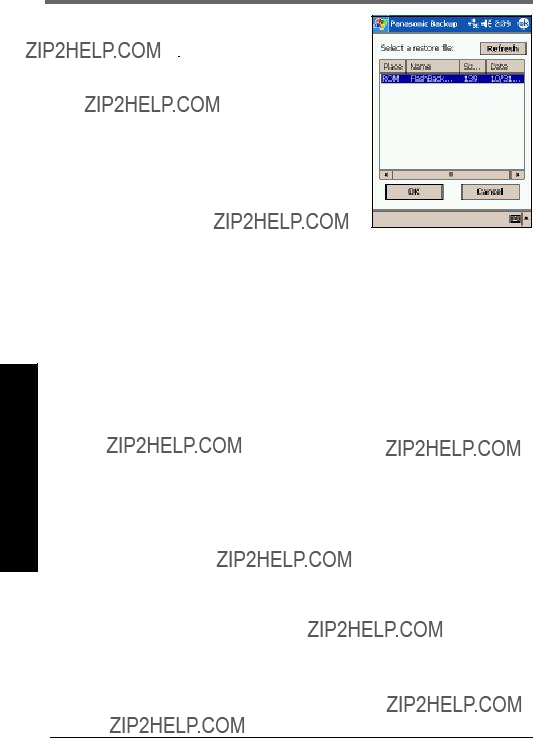
Panasonic Backup
Auto Restore
1 Full reset CF-P1( page 43 step (1) - (4)). [Panasonic Backup] screen will be displayed.
page 43 step (1) - (4)). [Panasonic Backup] screen will be displayed.
2 Select a file for restore, and tap [OK].
If a password has been set, a message will be displayed. Enter the password and press [OK]. Restore will start. The progress screen will be displayed. When the re- store is complete,
34
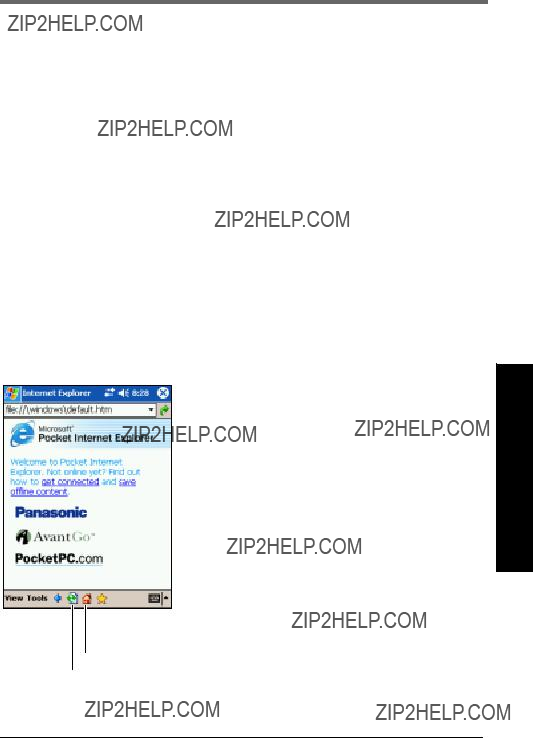
Pocket Internet Explorer
You can connect to Internet service provider (ISP), and use the connection to send and re- ceive
Getting Connected
The settings will vary for different network environments. Ask your system administrator or the person in charge of the network and make settings using the followings.
(1)Tap  - [Settings] - [Connections] tab - [Connections] in order. (2)Set up or change connection information
- [Settings] - [Connections] tab - [Connections] in order. (2)Set up or change connection information
 On the [Tasks] tab:
On the [Tasks] tab:
(1)Tap one of the followings:
Add a new modem connection (My ISP)
Add a new modem connection (My Work Network) Add a new VPN server connection (My Work Network) Set up my proxy server (My Work Network)
(2)Enter the necessary information.
 On the [Advanced] tab:
On the [Advanced] tab:
Tap [Select Networks], [Select Location] or [Network Card] and set up if required.
For details, tap  - [Help].
- [Help].
To run Pocket Internet Explorer
Tap  - [Internet Explorer].
- [Internet Explorer].
 Favorites Button
Favorites Button
Home Button
Refresh Button
35
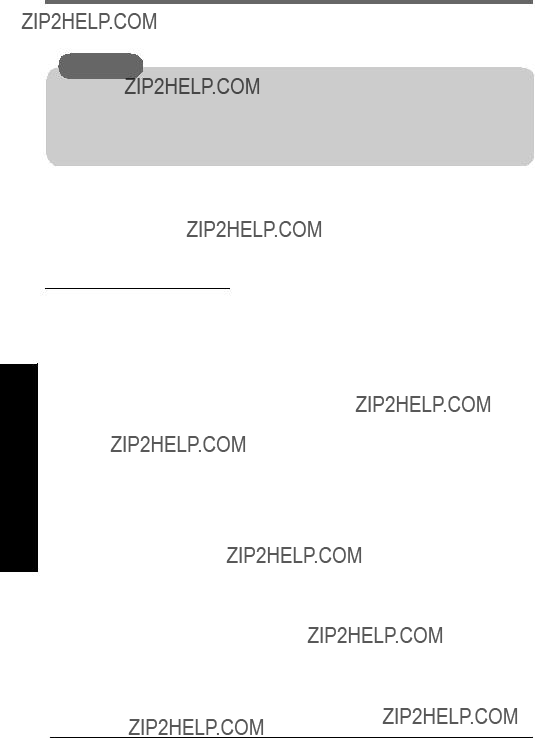
Connecting to Your Computer
Use Microsoft?? ActiveSync?? to synchronize a host computer and
CAUTION
 To ensure that synchronization functions properly, install Microsoft?? ActiveSync?? 3.7 before connecting
To ensure that synchronization functions properly, install Microsoft?? ActiveSync?? 3.7 before connecting
 If a mail in [Inbox] is backed up using Panasonic Backup, it cannot be accessed after restoring. When using [Inbox], do not use Panasonic Backup. Use Microsoft?? ActiveSync?? to backup/restore.
If a mail in [Inbox] is backed up using Panasonic Backup, it cannot be accessed after restoring. When using [Inbox], do not use Panasonic Backup. Use Microsoft?? ActiveSync?? to backup/restore.
The following methods can be used to connect the  The use of a Serial Cable or USB Cable.
The use of a Serial Cable or USB Cable.
 The use of the infrared communication port.
The use of the infrared communication port.
Use an
Installing ActiveSync??
1 Set the Companion CD into the host computer.
The opening screen is displayed automatically.
???When the opening screen is not automatically displayed In [Start] - [Run], input [x:\setup] and select [OK].
(???x??? is the drive letter. You can change the letter to suit your preference.)
2 Select  button.
button.
3
4 Select [Install ActiveSync x.x*1] and read the
5 At [Installation Message], select [OK].
[File Download] will be displayed. This screen varies depending on the host computer???s software (e.g. Internet Explorer version).
???If [Open] is displayed on [File Download], select [Open].
???If [Run this program from its current location] is displayed on [File Download], select it and then select [OK].
6
7
8 At [Get Connected], read the
(Refer to page 38 to connect the
???Change the setting for the host computer or
to Help displayed on the host computer during the installation.
36 *1 The version is shown.
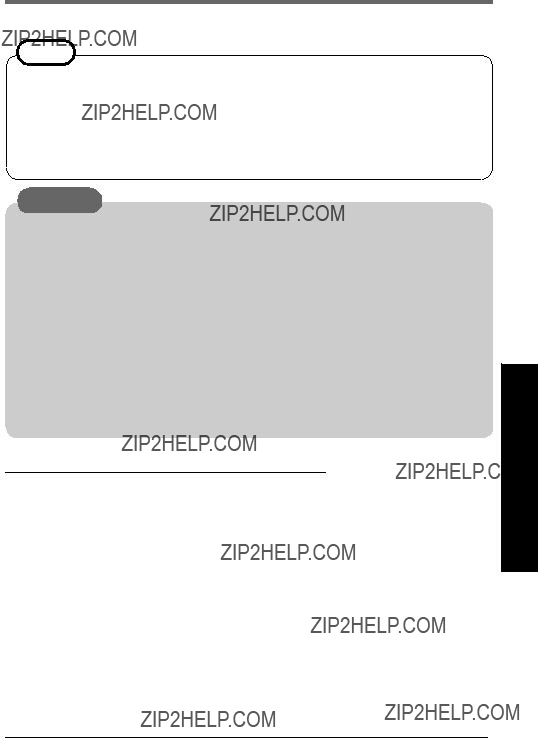
9 At [Set up a Partnership], select the partnership and select [Next].
NOTE
 To change the synchronization settings, tap, in order,
To change the synchronization settings, tap, in order,  - [ActiveSync] - [Tools] -
- [ActiveSync] - [Tools] -
[Options...]. Be sure to disconnect the cable when changing the synchronization set- tings.
 Disconnect and connect the cable again if communications do not start.
Disconnect and connect the cable again if communications do not start.
 For information about the Microsoft?? ActiveSync??, refer to the Microsoft?? ActiveSync?? Help.
For information about the Microsoft?? ActiveSync??, refer to the Microsoft?? ActiveSync?? Help.
CAUTION
 While performing communications, avoid the following:
While performing communications, avoid the following:
???Connect/disconnect the cable.
???Remove the computer from the cradle.
???Turn on/off the
 When adding a check mark for [Use mobile schedule to sync with this PC] in
When adding a check mark for [Use mobile schedule to sync with this PC] in  -
-
[ActiveSync] - [Tools] - [Options] - [PC] tab of
Backup/Restore data using ActiveSync??
Backup
(1)At [Microsoft ActiveSync] on the host computer, select [Tools] - [Backup/Restore] - [Backup] tab.
(2)Select [Full backup] or [Incremental backup] and then select [Back Up Now].
(3)At [Backup Complete], select [OK].
Restore
(1)After Backup procedure, at [Microsoft ActiveSync] on the host computer, select [Tools] - [Backup/Restore] - [Restore] tab, and select [Restore Now].
(2)Follow the
37
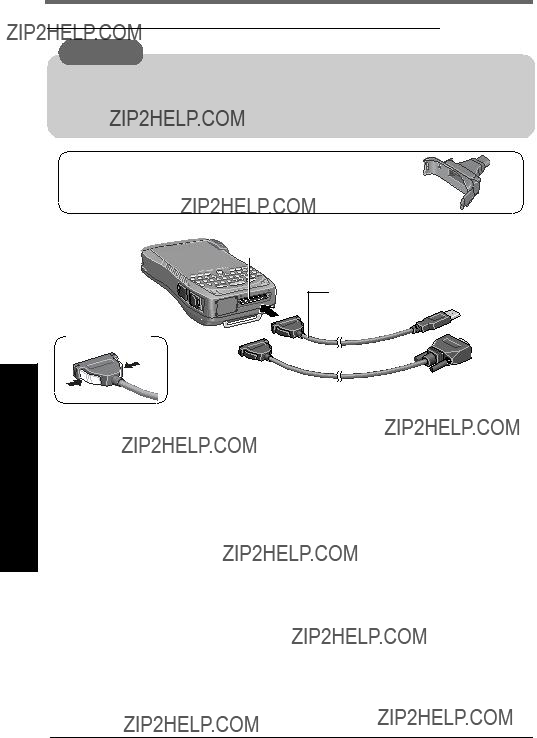
Connecting to Your Computer
When Connecting the
CAUTION
 To ensure that synchronization functions properly, install Microsoft?? ActiveSync?? 3.7 before connecting
To ensure that synchronization functions properly, install Microsoft?? ActiveSync?? 3.7 before connecting
 Turn off the
Turn off the
Use a Connector Protector (optional:

 Expansion Connector of the
Expansion Connector of the
USB Autosync Cable
Removing
or
 Serial Autosync Cable
Serial Autosync Cable
38
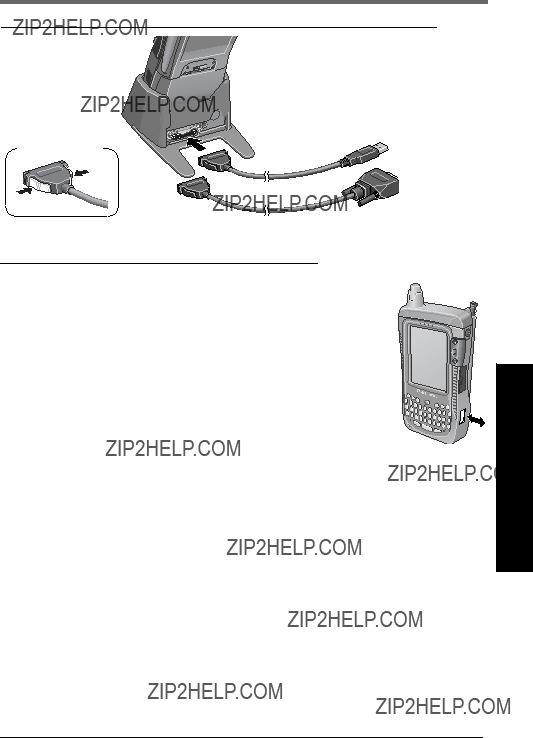
When Connecting the

 Expansion Connector of the Cradle
Expansion Connector of the Cradle
Removing
or
Using the Infrared Communication Port
By using the infrared communication port, data can be exchanged with- out a physical connection (e.g., using a cable or the cradle) between the
 Position
Position
 Have the infrared port of the
Have the infrared port of the
 We recommend a port to port distance of 30 cm {11.8"} or less.
We recommend a port to port distance of 30 cm {11.8"} or less.
Infrared Communication Port

39

Customizing the Computer
If you want information on the various individual settings of the computer, tap  - [Set- tings] and then tap the item (icon) you want to check.
- [Set- tings] and then tap the item (icon) you want to check.
(For details, tap  - [Help] - [Settings].)
- [Help] - [Settings].)
Personal
Buttons
Program buttons and the cursor control settings.
Input
Input panel (soft keyboard or letter recognizer, etc.) settings.
Menus
Select programs to be displayed in  , or items to be displayed in [New] in the Today screen.
, or items to be displayed in [New] in the Today screen.
Owner Information
Registration (or changing) of the user???s (owner???s) personal information. You can choose to display the registered owner information on the screen when
Password
Password enable/disable, and a password hint setting.
If a password is set, it has to be inputted in order to open the password screen. When the wrong password is inputted four times, the set hint is displayed. At times certain characters, such as ?? and ??, cannot be input from the keyboard. Use the soft keyboard.
Sounds & Notifications
Volume setting and operation sound setting.
Specific sound settings to be generated in a wide range of situations.
Today
Desktop display setting.
System
About
Display of release version and copyrights, and device ID setting.
Backlight
LCD backlight timeout function,
40

Certificates
Add and delete personal certificates and root certificates.
Clear Type Tuner
Make a text clear by moving the slider.
Clock
Time/date settings and alarm settings.
CPU Clock
Change the operating speed of the processor.
Memory
Computer memory assignment possible (assignment of memory for data memory and memory for program execution). Display of total storage card memory if it is installed. Activate or stop the running programs.
Option Devices
Add a check mark in a box to activate CF card and RF module when the power is off*1, and make Wireless LAN card*1 on/off setting.
To set to not light up LED indicators*1, remove the check mark at the [Use LED to indicate RF module status].
*1 Available on specific models.
Panasonic Settings
 [Version] tab: Display of ROM release version, the size of ROM option area, UUID and available devices*2.
[Version] tab: Display of ROM release version, the size of ROM option area, UUID and available devices*2.
*2 Available on specific models.
 [Record] tab: When a check mark is added at [Mix playsound], both play sound and microphone sound can be recorded. When the check mark is removed, only microphone sound can be recorded. (When us- ing the telephone, both play sound and microphone sound will be re- corded regardless of whether or not this check mark is turned on.) Se- lect either [Use ALC (Automatic Level Control)] or [Manual] and move the slider to adjust the record gain level.
[Record] tab: When a check mark is added at [Mix playsound], both play sound and microphone sound can be recorded. When the check mark is removed, only microphone sound can be recorded. (When us- ing the telephone, both play sound and microphone sound will be re- corded regardless of whether or not this check mark is turned on.) Se- lect either [Use ALC (Automatic Level Control)] or [Manual] and move the slider to adjust the record gain level.
 [Phone] tab: Add a check mark for [Speaker phone] to use with the speaker phone when using the telephone.
[Phone] tab: Add a check mark for [Speaker phone] to use with the speaker phone when using the telephone.
Add a check mark for [Enable
 [Charging Mode] tab (
[Charging Mode] tab ( page 8)
page 8)
 [Wakeup] tab (
[Wakeup] tab ( page 28)
page 28)
 [Buttons] tab (only for
[Buttons] tab (only for  page 27)
page 27)
41

Customizing the Computer
Power
Current battery charge status, the wireless signals on/off settings and automatic power off time setting.
Regional Settings
Display methods of the region, number system, currency, time, and date.
Remove Programs
Remove programs in storage memory.
Screen
Touchscreen alignment ( page 21), ClearType setting.
page 21), ClearType setting.
Connections
Beam
Enable or disable the function for receiving data via infrared communi- cation.
Connections
Internet connection and Intranet connection settings ( page 35).
page 35).
Wireless Ethernet (Only for the wireless model)
The wireless ethernet settings.
42

Dealing with Problems
Resetting Your Computer
When the computer fails to respond to an operation, reset your computer. There are two methods for resetting the computer.
CAUTION
Use only the provided stylus to push in the reset switch.
Do not push the reset switch with any other
This selection saves all stored records and entries and then restarts the computer.
Unsaved data in open windows may be lost.
If possible, turn off the computer and push the center of the reset switch straight in.
Push the reset switch within 1 second using the stylus. Resetting the computer may cause the clock to malfunction. After resetting the computer, check the time and correct the clock settings if necessary.
Performing a Full Reset
This selection erases all stored records and entries and then restarts the computer. Therefore, never perform a full reset unless a reset does not solve your problem.
(1)Using the provided stylus, push the center of the reset switch straight in for 1 second while holding down on the power switch.
(2)Tap the screen to set up your Pocket PC. The Windows alignment screen is displayed.
(3)Align the touchscreen ( page 21 step 3).
page 21 step 3).
(4)At [complete], tap the screen to begin using
If the [Panasonic Backup] screen is displayed, follow the
(5)Set the time and date.
Tap  - [Settings] - [System] tab - [Clock] to set the time and date, and tap [ok].
- [Settings] - [System] tab - [Clock] to set the time and date, and tap [ok].
43

Dealing with Problems
Troubleshooting
Starting Up
 The battery level may be too low. If the battery level goes below a certain threshold,
The battery level may be too low. If the battery level goes below a certain threshold,
 The computer may have entered a locked state. If this is the case, connect the AC adaptor and push the reset switch. Check the remaining battery level and make sure that multiple applications are not running simultaneously. Close all applications that are not being used.
The computer may have entered a locked state. If this is the case, connect the AC adaptor and push the reset switch. Check the remaining battery level and make sure that multiple applications are not running simultaneously. Close all applications that are not being used.
Alarm andAuto backup do not operate according to settings.
 It is possible that you were using 10 MB or more of stor- age memory, and that the power was turned off soon af- ter making settings. In this case, wait a few minutes be- fore turning off the computer.
It is possible that you were using 10 MB or more of stor- age memory, and that the power was turned off soon af- ter making settings. In this case, wait a few minutes be- fore turning off the computer.
44
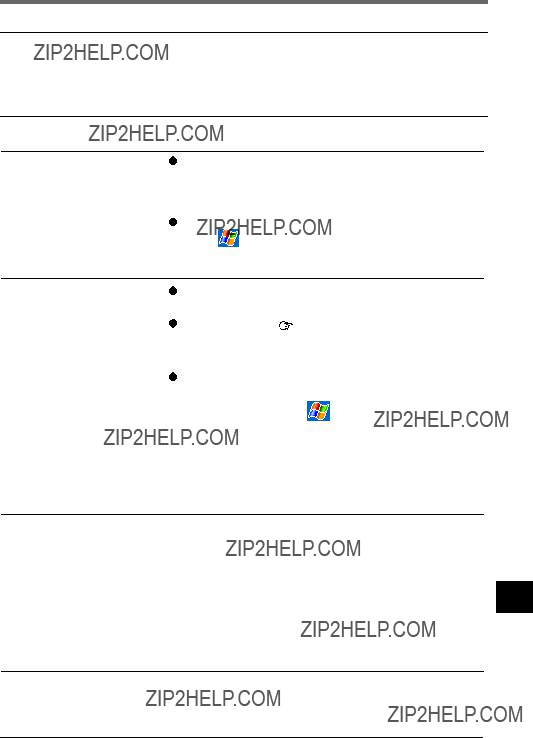
Application Software
The computer locks up dur- ing the execution of an ap- plication, or the execution speed becomes noticeably slower.
 Connect the AC adaptor and push the reset switch. Check the remaining battery level and make sure that multiple applications are not running simultaneously. Close all applications that are not being used.
Connect the AC adaptor and push the reset switch. Check the remaining battery level and make sure that multiple applications are not running simultaneously. Close all applications that are not being used.
Display
2Tap the [Brightness] tab and adjust the brightness with the slider.
Connecting a Host PC
A host computer does not recognize
 Confirm that Microsoft?? ActiveSync?? 3.7 (or a later ver- sion) has been installed in the host computer.
Confirm that Microsoft?? ActiveSync?? 3.7 (or a later ver- sion) has been installed in the host computer.
 Check to see if a fully charged battery pack is properly installed to
Check to see if a fully charged battery pack is properly installed to
 If a modem card has been inserted, disconnect these de- vices and check the communication status again.
If a modem card has been inserted, disconnect these de- vices and check the communication status again.
 Confirm that
Confirm that
 Push the reset switch to restart.
Push the reset switch to restart.
 If a cable or cradle is being used for the connection, recheck the connection to the host computer.
If a cable or cradle is being used for the connection, recheck the connection to the host computer.
45

Dealing with Problems
Connecting Peripherals
Peripheral is not recog- nized even after driver is installed.
 Remove cards or other peripherals, and push the reset switch.
Remove cards or other peripherals, and push the reset switch.
Network
Cannot connect to the net-  Check the server information and network settings. work.
Check the server information and network settings. work.
Sounds
46
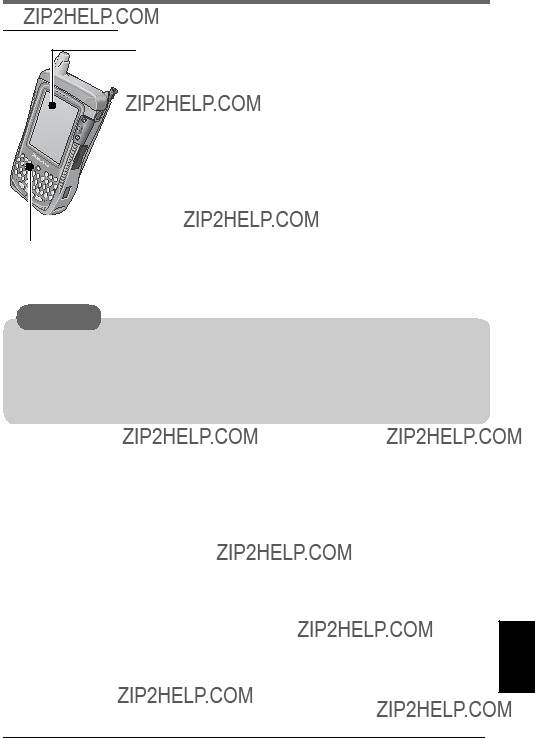
For Effective Use
Maintenance
LCD
Avoid using water when cleaning the panel. Ingredients included in water may leave residue and reduce readability of the screen.
<When cleaning dust/dirt>
Avoid rubbing off dust/dirt with cloth since it may leave scratch on the screen.
Sweep dust/dirt with fine brush, then wipe it with ???dry??? soft cloth used for cleaning glasses.
<When cleaning oily surface>
Apply camera lens cleaner on a soft gauze and clean it with gentle force. Then, wipe with dry soft cloth used for cleaning glasses.
Areas excluding the LCD
Wipe these areas with a soft cloth, after applying water or detergent diluted with water to the soft cloth and firmly wringing out excess water.
CAUTION
 Do not use benzene, thinner, or rubbing alcohol. Doing so may adversely affect the surface, e.g., discoloration. In addition, do not use
Do not use benzene, thinner, or rubbing alcohol. Doing so may adversely affect the surface, e.g., discoloration. In addition, do not use
 Do not directly add or spray water or detergent. If liquid enters the inside of the computer, it may cause the computer to work improperly or be damaged.
Do not directly add or spray water or detergent. If liquid enters the inside of the computer, it may cause the computer to work improperly or be damaged.
47

Specifications
48

 Microsoft?? ActiveSync?? 3.7 System Requirements
Microsoft?? ActiveSync?? 3.7 System Requirements
Microsoft?? Windows?? XP, Microsoft?? Windows?? 2000, Microsoft?? Windows?? Millennium Edition, Microsoft?? Windows NT?? Workstation 4.0 with SP6 or later, or Microsoft?? Windows?? 98
Microsoft?? Outlook?? 98 or later required for synchronization to the desktop or portable computer of
Microsoft?? Internet Explorer 4.01 SP1 or later
Available 9- or
One
VGA graphics card or compatible video graphics adapter at 256 color or higher Keyboard
Microsoft?? Mouse or compatible input device
 Options for Windows?? XP, Windows?? 2000, Windows?? Millennium Edition, Windows NT?? Workstation 4.0, or Windows?? 98
Options for Windows?? XP, Windows?? 2000, Windows?? Millennium Edition, Windows NT?? Workstation 4.0, or Windows?? 98
Audio card/Speakers for sound
Microsoft?? Office 97, Microsoft?? Office 2000, or Microsoft?? Office XP Modem for remote synchronization
Ethernet LAN connection for remote synchronization
 Microsoft?? Outlook?? 2002 System Requirements
Microsoft?? Outlook?? 2002 System Requirements
Hard disk space requirements will vary depending on configuration; custom installation choices may require more or less hard disk space.
245 MB of available hard disk space with 115 MB on the hard disk where the operating system is installed.
RAM requirements depend on the operating system used: Windows?? 98, or Windows?? 98 Second Edition
24 MB of RAM plus an additional 8 MB of RAM for each Office program running simultaneously Windows?? Millennium Edition, or Microsoft?? Windows NT??
32 MB of RAM plus an additional 8 MB of RAM for each Office program running simultaneously Windows?? 2000 Professional
64 MB of RAM plus an additional 8 MB of RAM for each Office program running simultaneously
49

LIMITED USE LICENSE AGREEMENT
THE SOFTWARE PROGRAM(S) (???PROGRAMS???) FURNISHED WITH THIS PANASONIC?? PRODUCT
(???PRODUCT???) ARE LICENSED ONLY TO THE
IN ACCORDANCE WITH THE LICENSE TERMS DESCRIBED BELOW. YOUR USE OF THE PRO-
GRAMS SHALL BE CONCLUSIVELY DEEMED TO CONSTITUTE YOUR ACCEPTANCE OF THE TERMS
OF THIS LICENSE.
Matsushita Electric Industrial Co., Ltd. (???MEI???) has developed or otherwise obtained the Programs and hereby licenses their use to you. You assume sole responsibility for the selection of the Product (includ- ing the associated Programs) to achieve your intended results, and for the installation, use and results obtained therefrom.
LICENSE
A.MEI hereby grants you a personal,
B.You may use the Programs only on the single Product which was accompanied by the Programs.
C.You and your employees and agents are required to protect the confidentiality of the Programs. You may not distribute or otherwise make the Programs or related documentation available to any third party, by
D.You may not copy or reproduce, or permit to be copied or reproduced, the Programs or related documentation for any purpose, except that you may make one (1) copy of the Programs for backup purposes only in support of your use of the Programs on the single Product which was accompanied by the Programs. You shall not modify, or attempt to modify, the Programs.
E.You may transfer the Programs and license them to another party only in connection with your transfer of the single Product which was accompanied by the Programs to such other party. At the time of such a transfer, you must also transfer all copies, whether in printed or machine readable form, of every Program, and the related documentation, to the same party or destroy any such copies not so transferred.
F.You may not remove any copyright, trademark or other notice or product identification from the Programs and you must reproduce and include any such notice or product identification on any copy of any Program.
YOU MAY NOT REVERSE ASSEMBLE, REVERSE COMPILE, OR MECHANICALLY OR ELECTRONI-
CALLY TRACE THE PROGRAMS, OR ANY COPY THEREOF, IN WHOLE OR IN PART.
YOU MAY NOT USE, COPY, MODIFY, ALTER, OR TRANSFER THE PROGRAMS OR ANY COPY
THEREOF, IN WHOLE OR IN PART, EXCEPT AS EXPRESSLY PROVIDED IN THE LICENSE.
IF YOU TRANSFER POSSESSION OF ANY COPY OF ANY PROGRAM TO ANOTHER PARTY, EX-
CEPT AS PERMITTED IN PARAGRAPH E ABOVE, YOUR LICENSE IS AUTOMATICALLY TERMI-
NATED.
TERM
This license is effective only for so long as you own or lease the Product, unless earlier terminated. You may terminate this license at any time by destroying, at your expense, the Programs and related docu- mentation together with all copies thereof in any form. This license will also terminate effective immedi- ately upon occurrence of the conditions therefore set forth elsewhere in this Agreement, or if you fail to comply with any term or condition contained herein. Upon any such termination, you agree to destroy, at your expense, the Programs and related documentation together with all copies thereof in any form.
YOU ACKNOWLEDGE THAT YOU HAVE READ THIS AGREEMENT, UNDERSTAND IT AND AGREE
TO BE BOUND BY ITS TERMS AND CONDITIONS. YOU FURTHER AGREE THAT IT IS THE COM-
PLETE AND EXCLUSIVE STATEMENT OF THE AGREEMENT BETWEEN US, WHICH SUPERSEDES
ANY PROPOSAL OR PRIOR AGREEMENT, ORAL OR WRITTEN, AND ANY OTHER COMMUNICA-
TIONS BETWEEN US, RELATING TO THE SUBJECT MATTER OF THIS AGREEMENT.
50

About Intel?? software products
The enclosed software products and documentation were developed at private expense, and are provided with ???RESTRICTED RIGHTS.??? Use, duplication or disclosure by the government is subject to restrictions as set forth in FAR
Copyright
This manual is copyrighted by Matsushita Electric Industrial Co., Ltd. with all rights reserved. No part of this manual may be reproduced in any form without the prior written permission of Matsushita Electric Industrial Co., Ltd.
No patent liability is assumed with respect to the use of the information contained herein.
??2003 Matsushita Electric Industrial Co., Ltd. All Rights Reserved.
Disclaimer
Computer specifications and manuals are subject to change without notice. Matsushita Electric Industrial Co., Ltd. assumes no liability for damage incurred directly or indirectly from errors, omissions or discrepancies between the computer and the manuals.
Trademarks
Microsoft??, Windows??, Windows NT??, Outlook?? and ActiveSync?? are registered trademarks of Microsoft Corporation of the United States and/or other countries.
Mobile is a trademark of Microsoft Corporation of the United States and/or other countries. Intel?? and Pentium?? are registered trademarks of Intel Corporation.
Panasonic?? is a registered trademark of Matsushita Electric Industrial Co., Ltd.
51

PANASONIC U.K.LTD (PUK)
WILLOUGHBY ROAD,BRACKNELL,BERKSHIRE,
RG12 4FP